
The United States Holocaust Memorial Museum (USHMM) is the United States' official memorial to the Holocaust. Adjacent to the National Mall in Washington, D.C., the USHMM provides for the documentation, study, and interpretation of Holocaust history. It is dedicated to helping leaders and citizens of the world confront hatred, prevent genocide, promote human dignity, and strengthen democracy.

The Museum of Tolerance-Beit HaShoah, a multimedia museum in Los Angeles, California, United States, is designed to examine racism and prejudice around the world with a strong focus on the history of the Holocaust. The museum was established in 1993, as the educational arm of human rights organization, the Simon Wiesenthal Center. The museum also deals with atrocities in Cambodia and Latin America, along with issues like bullying and hate crimes. The museum has an associated museum and professional development multi-media training facility in New York City.
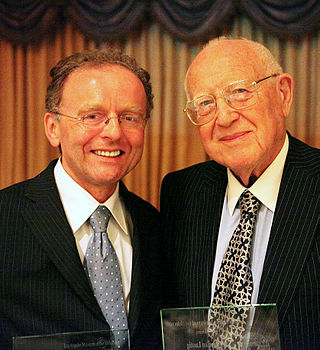
Gedenkdienst is the concept of facing and taking responsibility for the darkest chapters of one's own country's history while ideally being financially supported by one's own country's government to do so. Founded in Austria in 1992 by Andreas Maislinger, the Gedenkdienst is an alternative to Austria's compulsory national military service as well as a volunteering platform for Austrians to work in Holocaust and Jewish culture-related institutions around the world with governmental financial support. In Austria it is also referred to as Austrian Holocaust Memorial Service provided by the Austrian Service Abroad. The Austrian Gedenkdienst serves the remembrance of the crimes of Nazism, commemorates its victims and supports Jewish cultural future. The program is rooted in the acknowledgment of responsibility by the Austrian government for the crimes committed by National Socialism.

The Austrian Service Abroad is a non-profit organization founded by Andreas Hörtnagl, Andreas Maislinger and Michael Prochazka in 1998, which sends young Austrians to work in partner institutions worldwide serving Holocaust commemoration in form of the Gedenkdienst, supporting vulnerable social groups and sustainability initiatives in form of the Austrian Social Service and realizing projects of peace within the framework of the Austrian Peace Service. Its services aim at the permanence of life on earth. The Austrian Service Abroad carries and promotes the idea of the House of Responsibility for the birthplace of Adolf Hitler in Braunau am Inn. The Austrian Service Abroad is the issuer of the annually conferred Austrian Holocaust Memorial Award. The program is funded by the Austrian government.

The Holocaust Museum Houston is located in Houston's Museum District, in Texas. It is the fourth largest holocaust museum in the U.S. It was opened in 1996.
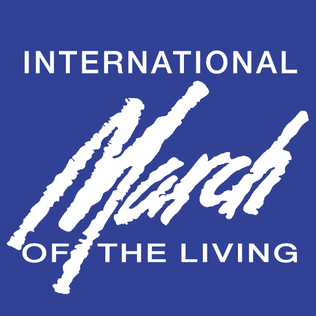
The March of the Living is an annual educational program which brings students from around the world to Poland, where they explore the remnants of the Holocaust. On Holocaust Memorial Day observed in the Jewish calendar, thousands of participants march silently from Auschwitz to Birkenau, the largest Nazi concentration camp complex built during World War II.

The International Holocaust Remembrance Day, or the International Day in Memory of the Victims of the Holocaust, is an international memorial day on 27 January that commemorates the victims of the Holocaust, which resulted in the genocide of one third of the Jewish people, along with countless members of other minorities by Nazi Germany between 1933 and 1945, an attempt to implement its "final solution" to the Jewish question. 27 January was chosen to commemorate the date when the Auschwitz concentration camp was liberated by the Red Army in 1945.
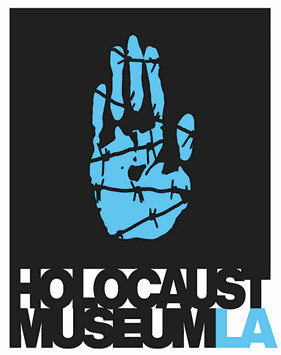
Holocaust Museum LA, formerly known as Los Angeles Museum of the Holocaust, is a museum located in Pan Pacific Park within the Fairfax district of Los Angeles, California. Founded in 1961 by Holocaust survivors, Holocaust Museum LA is the oldest museum of its kind in the United States. Its mission is to commemorate those murdered in the Holocaust, honor those who survived, educate about the Holocaust, and inspire a more dignified and humane world.
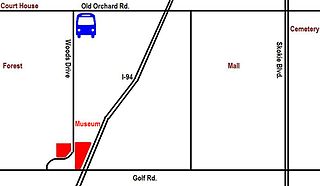
The Illinois Holocaust Museum and Education Center is a museum located in Skokie, Illinois, near Chicago. According to the Center's mission statement, its founding principle is to "Remember the Past; Transform the Future." Its mission is to preserve the legacy of the Holocaust by honoring victims' memories and to educate in the service of combating hatred, prejudice and indifference. The Museum fulfills its mission through its collections-based exhibitions and through education programs and other initiatives that promote human rights and the elimination of genocide.
Synagogues may be considered "oldest" based on different criteria, and can be oldest in the sense of oldest surviving building, or oldest in the sense of oldest congregation. Some old synagogue buildings have been in continuous use as synagogues, while others have been converted to other purposes, and others, such as the Touro Synagogue, were shuttered for many decades. Some early established congregations have been in continuous existence, while other early congregations have ceased to exist.
Holocaust studies, or sometimes Holocaust research, is a scholarly discipline that encompasses the historical research and study of the Holocaust. Institutions dedicated to Holocaust research investigate the multidisciplinary and interdisciplinary aspects of Holocaust methodology, demography, sociology, and psychology. It also covers the study of Nazi Germany, World War II, Jewish history, religion, Christian-Jewish relations, Holocaust theology, ethics, social responsibility, and genocide on a global scale. Exploring trauma, memories, and testimonies of the experiences of Holocaust survivors, human rights, international relations, Jewish life, Judaism, and Jewish identity in the post-Holocaust world are also covered in this type of research.

The Days of Remembrance of the Victims of the Holocaust (DRVH) is an annual eight-day period designated by the United States Congress for civic commemorations and special educational programs that help citizens remember and draw lessons from the Holocaust. The annual DRVH period normally begins on the Sunday before the Israeli observance of Yom HaShoah, Holocaust Memorial Day, and continues through the following Sunday, usually in April or May. A National Civic Commemoration is held in Washington, D.C., with state, city, and local ceremonies and programs held in most of the fifty states, and on U.S. military ships and stations around the world. The United States Holocaust Memorial Museum designates a theme for each year's programs, and provides materials to help support remembrance efforts.
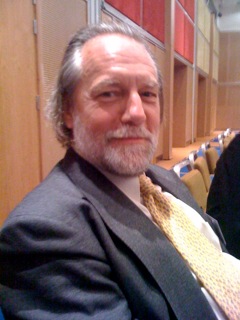
Alain Joseph Goldschläger, is a professor at the University of Western Ontario. He holds a PhD from the University of Toronto (1975). He specializes in French language and literature, literature of the Shoah and testimonial writing.
USC Shoah Foundation – The Institute for Visual History and Education, formerly Survivors of the Shoah Visual History Foundation, is a nonprofit organization dedicated to making audio-visual interviews with survivors and witnesses of the Holocaust and other genocides, a compelling voice for education and action. It was established by Steven Spielberg in 1994, one year after completing his Academy Award-winning film Schindler's List. In January 2006, the foundation partnered with and relocated to the University of Southern California (USC) and was renamed the USC Shoah Foundation – The Institute for Visual History and Education. In March 2019, the institute opened their new global headquarters on USC's campus.
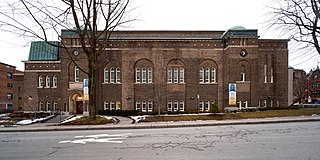
Congregation Shaar Hashomayim is an Ashkenazi synagogue in Westmount, Quebec. Incorporated in 1846, it is the oldest traditional Ashkenazi synagogue in Canada and the largest traditional synagogue in Canada.

The March of the Living Digital Archive Project, begun in 2013, aims to gather Holocaust testimony from Canadian survivors who have participated in the March of the Living. Since 1988, Holocaust survivors have traveled to Poland with young students on the March of the Living to share their Holocaust stories in the locations they transpired.
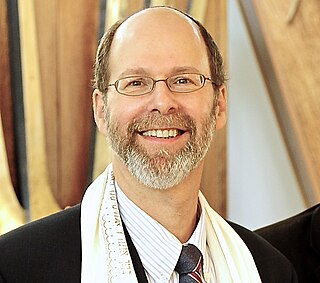
Eli Rubenstein is a Holocaust educator, writer, and filmmaker. He is currently the religious leader of Congregation Habonim Toronto at Toronto synagogue founded by Holocaust survivors. He is also the National Director of March of the Living Canada, Director of Education for March of the Living International, Director of March of Remembrance and Hope Canada, and Chairman of the Canadian Friends of the Israel Guide Dog Center for the Blind.

Yehouda Leon Chaki is a Greek-born Canadian artist based in Montreal, Quebec. Best known for his colourful palette and expressionistic landscapes, he began exhibiting in 1959 and today his work can be found in over 50 public and corporate collections and museums around the world such as Concordia University, the Montreal Museum of Fine Arts, Musée d'Art Contemporain de Montréal, Jerusalem City Hall, and the Museo de Arte Moderna in Rio de Janeiro.















